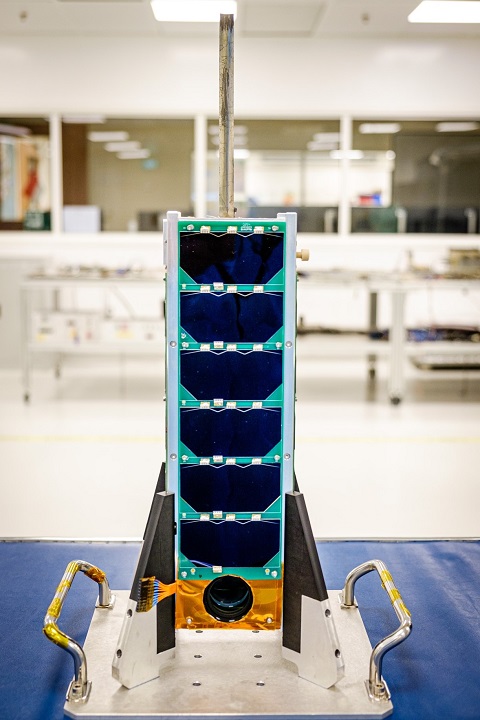SCOOB-I
The Satellite Research Centre (SaRC) at NTU School of Electrical and Electronic Engineering has started a hands-on student training program. The first satellite is the Student Satellite Series (S3-I) or SCOOB-I spacecraft. SCOOB-I is the size of a shoe box and carries a solar spectral sensor, Earth imaging camera, Attitude Determination System and a novel solar panel developed at SaRC. Under the overall guidance of Asst. Professor Amal Chandran, students started working on the development of SCOOB-I in 2018. More than 50 students have so far worked on this spacecraft through their Design and innovation Projects (DIP), Final Year Projects (FYP), Masters and PhD work. Students and staff at NTU developed an Earth imaging cubesat camera designed to provide images at a resolution of 25-30 m.
The solar spectral sensor on SCOOB-I developed by students at NTU will make observations of the Sun in 18 channels from Ultra-Violet to Infra-Red. The solar output is important for calculating the energy output of the Sun which helps in Earth’s radiation budget calculation. The energy from the Sun is absorbed in different parts of the Earth’s atmosphere. By understanding the energy output of the Sun in different parts of the electromagnetic spectrum, the energy input to the different layers of the atmosphere can be estimated. SCOOB-I will be Singapore’s first heliophysics mission which will help us to understand better the Sun-Earth connection and solar impacts on Earth’s climate and weather.

| Orbit | Near equatorial, 530 km altitude |
|---|---|
| Design lifetime | 6 months |
| Dimension | Stowed: 340 x 100 x 100 mm3 |
| (L x W x H) | Deployed: 340 x 100 x 100 mm3 |
| Mass | 1.70 kg |
| ADCS | Spacecraft Pointing accuracy < 10o (2 x FSS, 2 x CSS, 1 x 3-axis Magnetometer) |
| EPS | 4 x body-mounted solar panels, 7 W power generated 10.4 Wh Li-Po @ 4.2 V |
| TT&C | 19200 bps UHF 2GFSK |
| Payload | 18-channel IR, Visible, UV spectrophotometer, Visible EO Camera |
